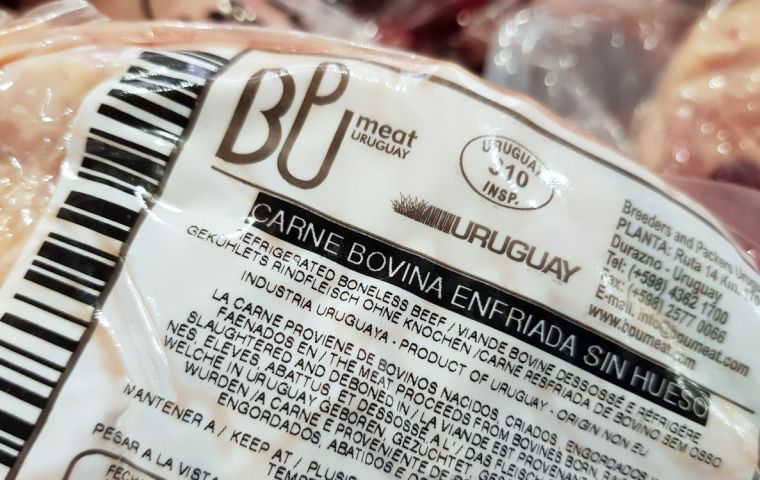MercoPress. South Atlantic News Agency
Uruguay expands meat sales business to Japan, South Korea
 Asian markets offer a world of opportunities to Uruguayan beef exports
Asian markets offer a world of opportunities to Uruguayan beef exports Uruguayan meat sales to Japan have been growing at an increasingly faster pace, according to press reports. In 2019, trade was worth US $ 20 million; in 2020, US $ 24 million and so far in 2021, revenues in dollars have grown 72% compared to the same period of the previous year, according to Montevideo Portal.
Meat exporters see a large potential there because, for Japan, Uruguay's shipments account for only 1% of its beef imports.
On the other hand, Japan's market for Uruguay does make a difference in that it pays more than other customers for the same product. In 2021, a ton of Uruguayan meat exported to Japan sold for US $ 4,719, while on average the rest of the world paid US $ 4,100.
In its August report, Uruguay's National Meat Institute (INAC) pointed out that the basket of products that go to Japan “has a component of products for manufacturing and another of high-value cuts.”
Uruguayan meat competes against the two main suppliers of these countries: the United States and Australia. Japan is the third-largest meat importer in the world. It has a much higher consumption than China, at 10 kilos of meat per capita per year.
South Korea has also become a market of interest for Uruguayan exporters. The country ranks fourth in the world among meat importers, with 8% of the world's share. On top of that, it consumes about 16 kilos of imported meat every year, the website reported.
Uruguayan exports to South Korea have increased fivefold over the past three years, increasing 460% in volume and value, according to INAC. As in the Japanese case, for South Korea, these purchases represents less than 1% of its total meat imports, while for Uruguay it represents 0.5% of its beef exports.
Although Uruguay's beef exports to these two markets have grown significantly in the last three years, the South American country has a major disadvantage in terms of tariffs and needs to compete with the United States and Australia.
Countries without a free trade agreement with South Korea face a 40% tariff on exports, while the United States, Australia and New Zealand, on the other hand, are charged 13.3%, 18.6% and 21.3% respectively.
The website also reported that these three countries are headed for a zero tariff situation. The United States in 2026, Australia in 2028 and New Zealand in 2029.
On the other hand, Uruguayan meat pays a 38.5% tariff to enter Japan, which is one of the countries grouped under the Trans-Pacific Treaty. Hence the INAC's initiative to break into the bloc.
“Today the tariff is at 25% and it will continue to fall towards 9%, that's where we see the greatest potential,” INAC's Álvaro Pereira had said one day before President Luis Lacalle Pou made public his intentions to reach a free trade agreement with China, spurring controversy with the rest of Mercosur.




Top Comments
Disclaimer & comment rulesCommenting for this story is now closed.
If you have a Facebook account, become a fan and comment on our Facebook Page!